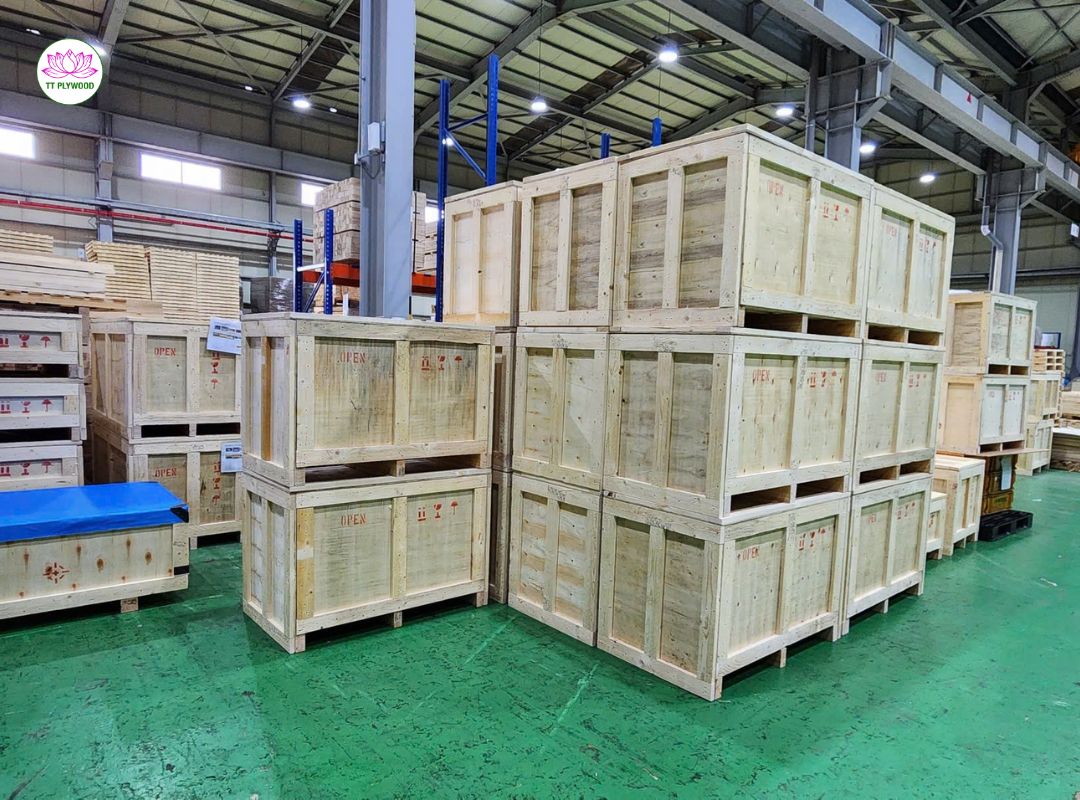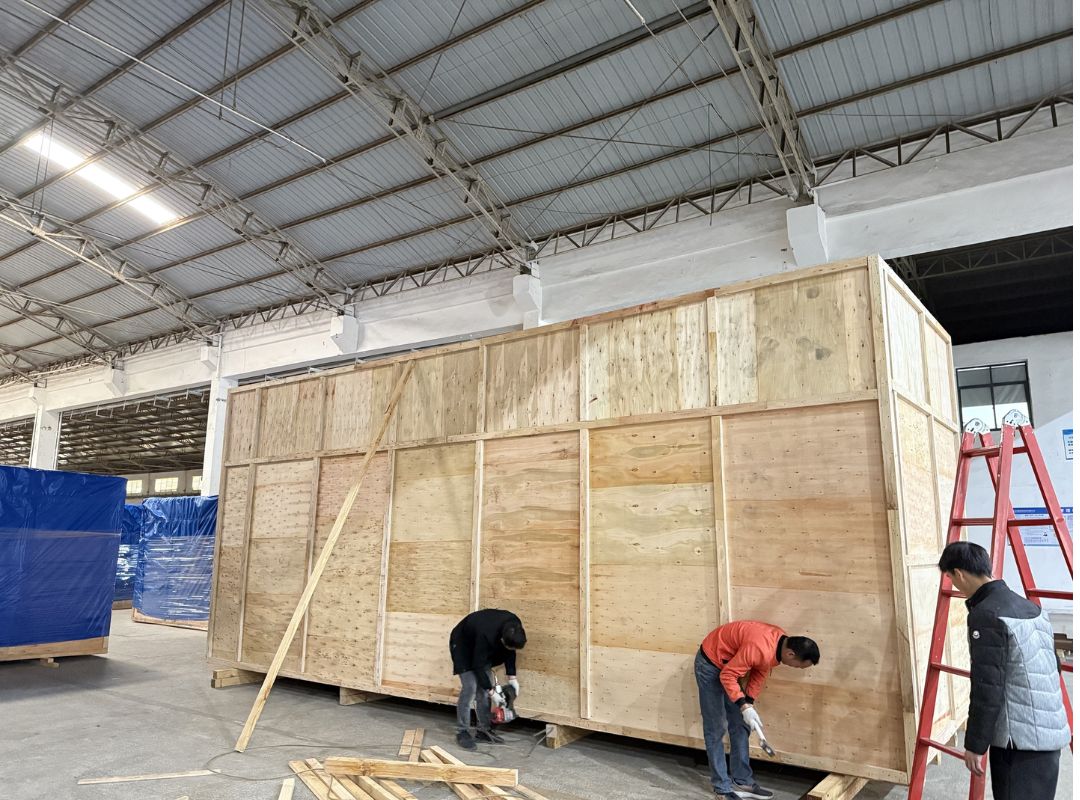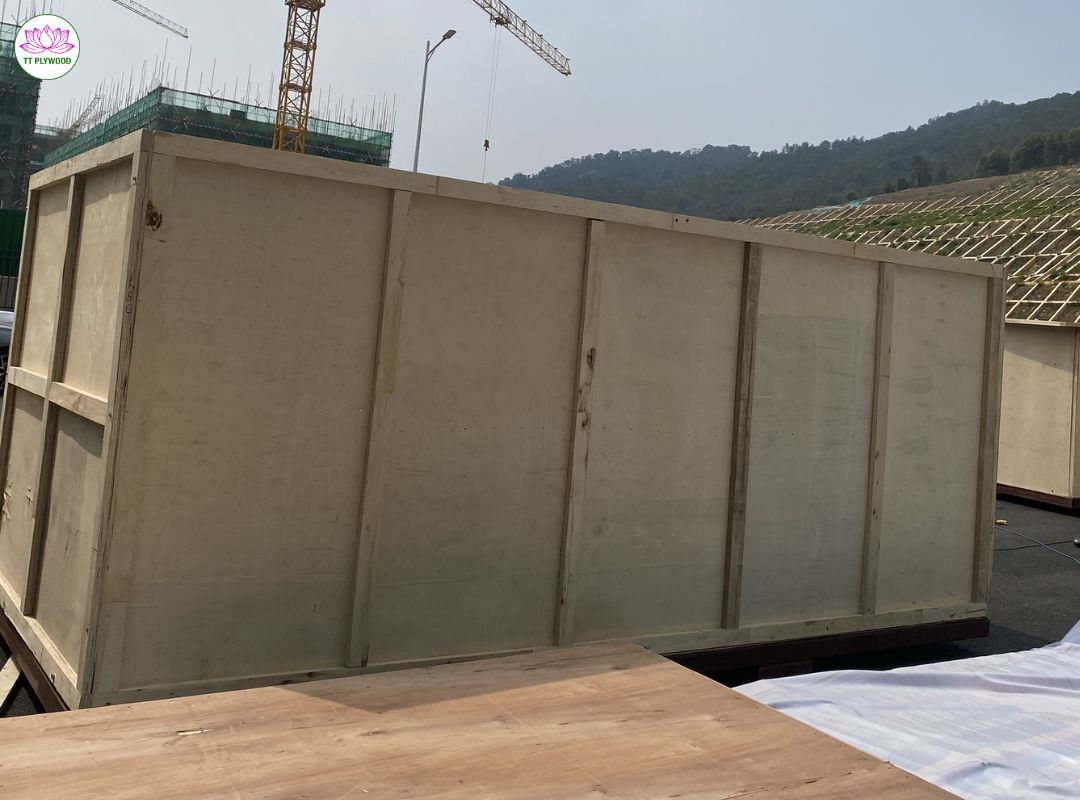-
-
-
Total payment:
-

Plywood for Industrial Packaging | Durable & Cost-Efficient Crates for Global Shipping
Posted by Thanh Uyên at 23/09/2025
Industrial packaging is the unsung hero of global trade. Every machine, electronic device, or fragile instrument shipped overseas depends on packaging to arrive intact. In this context, plywood has established itself as one of the most reliable and versatile materials. Whether used for crates, pallets, or boxes, plywood balances durability with cost-efficiency, making it the preferred choice for companies that operate across continents.
Unlike traditional solid wood packaging, plywood combines engineered strength with international compliance. Its layered construction delivers stability that resists cracking, warping, and heavy loads. For businesses, this translates into fewer damage claims, smoother customs clearance, and optimized shipping costs.
Why Plywood for Industrial Packaging?

Plywood’s value lies in its unique construction: thin veneers glued together in alternating grain directions. This cross-lamination produces exceptional tensile strength and distributes loads evenly. For long-distance shipping—often weeks at sea or across multiple modes of transport this stability becomes indispensable.
Compared with other materials, plywood holds a middle ground:
- Cardboard is lightweight and inexpensive but unsuitable for heavy or valuable cargo.
- Plastic resists moisture but lacks structural rigidity for machinery or stacked loads.
- Metal is extremely durable but costly and adds significant weight to shipments.
Plywood, by contrast, provides the best of all worlds: strong enough for industrial equipment, light enough to manage freight costs, and cost-effective for businesses shipping in bulk.
Key Advantages of Plywood Crates and Boxes
- Strength and Durability: Handles stacking, shocks, and vibrations typical in multimodal shipping.
- Moisture Resistance: Phenolic or melamine-bonded panels withstand humidity and sea voyages.
- Versatility: Can be manufactured into crates of any size or complexity.
- Compliance: Accepted globally and typically exempt from ISPM 15 fumigation requirements.
- Sustainability: FSC-certified plywood supports eco-friendly and reusable packaging solutions.
👉 Learn more about risks when sourcing low-grade material: The Hidden Costs of Cheap Plywood.
Types of Plywood for Packaging

- Commercial Plywood is widely used for medium-weight goods, offering a balance between affordability and strength.
- Hardwood Plywood delivers superior load-bearing capacity, making it suitable for heavy machinery and automotive components.
- Moisture-Resistant Plywood is essential for sea freight, where cargo faces high humidity, condensation, and long storage times.
- Lightweight Plywood such as poplar or mixed-core reduces overall shipping weight, particularly useful in air freight where costs are calculated per kilogram.
👉 For a general overview of plywood varieties, see: What Is Plywood? Everything You Need to Know.
Optimizing Cost and Efficiency
Packaging choices extend far beyond material costs—they directly influence freight charges, storage efficiency, and damage risks. Two major areas deserve attention:
-
Plywood Thickness Selection
Using panels that are too thick inflates crate weight, raising container freight charges. For example, an exporter shipping electronics at 8 mm thickness instead of 12 mm saved nearly 8% in shipping costs per container. On the other hand, underestimating thickness risks cargo damage that far outweighs the savings. The key is matching plywood strength with cargo fragility and transport distance. -
Crate Design Efficiency
Smart design saves money and space. Collapsible plywood crates reduce warehouse storage costs when empty, while modular crates allow stacking and maximize container fill. A European machinery exporter redesigned its plywood crates to fit two additional units per container, cutting shipping costs by 12% annually.
👉 For practical guidance on crate sizing, check: Choosing the Right Packaging Size: Reduce Shipping Costs and Maximize Efficiency.
Real-World Applications

Plywood packaging is not limited to one sector; its use spans across industries. Heavy machinery, including turbines and engines, is commonly transported in reinforced hardwood crates. These crates can withstand extreme loads and stacking pressures in containerized shipping.
Electronics and high-tech components benefit from plywood’s shock resistance. Sensitive items such as servers or medical equipment need protection from both vibration and impact during multimodal transport. Plywood crates, often combined with foam linings, ensure these goods arrive operational.
For fragile consumer goods ceramics, glass, instruments plywood outperforms cardboard. Its rigidity prevents crushing under load, while its adaptability allows for custom cutouts and partitions to protect delicate items.
Pharmaceuticals and chemicals also rely on plywood crates. With inner linings of barrier film or aluminum foil, they meet safety regulations while leveraging plywood’s structural stability. Unlike solid wood, plywood avoids pest-related restrictions, ensuring smoother customs clearance.
Sustainability and Compliance
Modern packaging decisions must align with environmental and legal frameworks. FSC-certified Forest Stewardship Council plywood ensures materials come from responsibly managed forests. Reusable plywood crates reduce waste, supporting corporate ESG goals while lowering long-term packaging expenses.
Compliance is equally critical. The European Union Deforestation Regulation (EUDR) requires traceability of wood products to prove they do not originate from deforested land after 2020. Plywood with certified sourcing and geo-location data helps businesses maintain compliance, avoiding delays and penalties at EU borders.
For exporters, adopting certified plywood is not only about legal requirements but also market positioning. Clients increasingly prefer partners who can demonstrate environmental responsibility.
Best Practices for Choosing Plywood Packaging
- Match plywood grade and thickness to product weight and fragility.
- Consider mode of transport—sea freight requires moisture resistance, air freight benefits from lightweight cores.
- Verify certifications (FSC, ISPM exemptions) for customs clearance.
- Incorporate reusability into packaging strategy to reduce long-term costs.
Frequently Asked Questions (FAQ)
1. What thickness of plywood is best for packaging?
Light goods typically use 6–9 mm, while heavy machinery often requires 15–21 mm.
2. Is plywood packaging accepted worldwide?
Yes. Unlike solid wood, plywood is generally exempt from ISPM 15 fumigation requirements, making it widely accepted.
3. Can plywood crates be reused?
Yes. Plywood crates can be reused multiple times, offering both cost savings and sustainability.
4. How does plywood compare to plastic crates?
Plastic is lighter but often lacks the rigidity needed for industrial goods. Plywood provides stronger protection and is recyclable.
5. Which industries benefit most?
Automotive, heavy machinery, electronics, fragile goods, and pharmaceuticals all rely heavily on plywood crates.
Conclusion and Call to Action
Plywood has become the gold standard for industrial packaging. It combines durability, cost-efficiency, and compliance with international standards, ensuring products—from heavy equipment to fragile electronics—reach global destinations safely and affordably.
At TT Plywood, we provide high-quality plywood designed specifically for packaging applications. Whether you need moisture-resistant panels for sea freight, lightweight sheets for air cargo, or FSC-certified plywood for compliance, our team can deliver tailored solutions.
👉 Contact TT Plywood today to discuss your packaging requirements and discover how our plywood can optimize durability and cost in your global supply chain.










